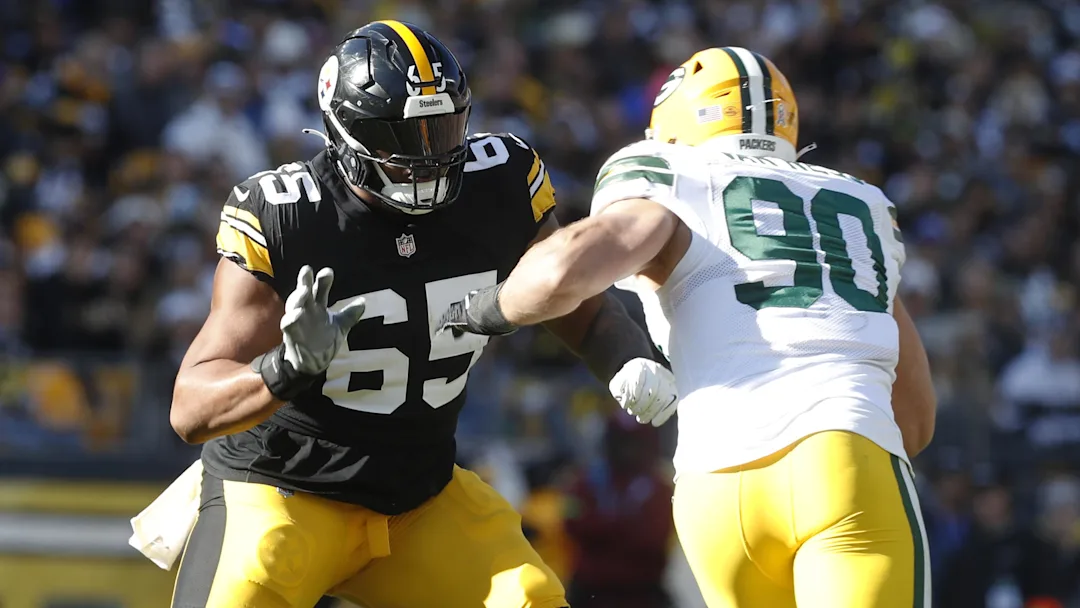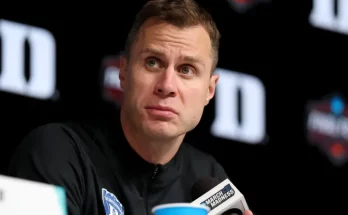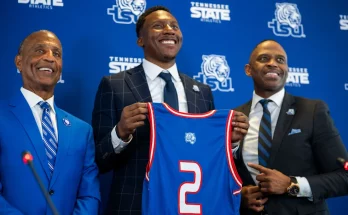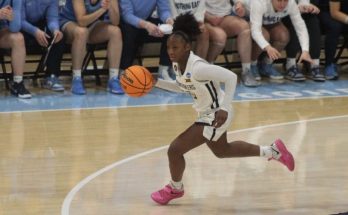Texas A&M has long been a powerhouse for developing top-tier talent, consistently sending elite athletes to the NFL. But while many Aggies have gone on to achieve greatness at the professional level, not every story has a fairytale ending—especially when it comes to contracts. One former Texas A&M offensive lineman has found himself in an uncomfortable spotlight, as his NFL contract was recently named among the worst in the league. It’s a harsh label for any player, but even more jarring when attached to someone once celebrated for his dominance in the trenches at the college level. The scrutiny surrounding his deal has ignited conversations about player value, front office decisions, and the unpredictable nature of NFL projections.
The NFL is a league that thrives on performance, and contracts are often reflections of a player’s perceived worth at a given time. For this former Aggie, his initial rise in the NFL came with massive expectations and a lucrative payday to match. His size, strength, and college pedigree made him a hot commodity, and a team in need of bolstering its offensive line did not hesitate to open its wallet. But as seasons have gone by, the narrative has shifted dramatically. What was once seen as an investment in a cornerstone player has become, in the eyes of analysts and fans alike, a glaring example of financial mismanagement.
The criticism isn’t just about the numbers on the paycheck—it’s about the lack of return on investment. Injuries, inconsistency, and a failure to meet the lofty expectations tied to his contract have painted a sobering picture. For teams, cap space is sacred, and when a big contract underperforms, the ripple effect can disrupt roster construction, depth, and long-term planning. That’s why this deal has become such a point of contention. When one player is taking up significant space on the payroll without delivering on the field, it puts pressure on every other position group and makes the front office appear shortsighted.
Fans who once celebrated the signing now voice their frustrations online and in stadiums, wondering what went wrong. Some blame coaching. Others point to scheme fit. Still others argue that the player was never as dominant as advertised and that the contract was based more on potential than proven performance. Whatever the reason, the damage is done. The contract is locked in, the money is committed, and the results simply haven’t matched the investment.
From the player’s perspective, it’s undoubtedly a tough pill to swallow. No athlete wants to be labeled a bust or have their worth questioned. For many, the NFL dream is about more than just accolades and paychecks—it’s about legacy, pride, and proving doubters wrong. The weight of public opinion, especially when it turns negative, can be crushing. And while some athletes are able to block out the noise and refocus, others struggle under the weight of expectation and criticism. For a lineman, whose contributions are often overshadowed by flashier positions, the spotlight now feels especially harsh.
There’s also a larger conversation to be had about how NFL contracts are structured and evaluated. The league is notorious for handing out deals that seem impressive on paper but include minimal guarantees or outs for teams after a season or two. In this case, however, the guaranteed money and length of the contract make it particularly painful for the franchise involved. Analysts have cited the deal as a cautionary tale—a reminder that even the most promising prospects can falter and that financial prudence must always be a priority in roster building.
Ironically, the player’s college resume remains impeccable. At Texas A&M, he was a force to be reckoned with—a true anchor on the offensive line who helped pave the way for explosive plays and protected quarterbacks with unwavering consistency. He was a team leader, a fan favorite, and a symbol of the Aggies’ blue-collar identity. It’s that very dominance that made him such an attractive NFL prospect in the first place. But the transition from college to pro is a steep one, and not every skill set translates seamlessly.
As the criticism mounts, some former coaches and teammates have stepped up to defend him. They argue that he’s been placed in an impossible situation, that system changes, unstable quarterback play, and lack of support on the line have all contributed to his struggles. Others believe he can still turn things around and live up to the contract, citing flashes of brilliance and untapped potential. After all, the NFL is full of comeback stories, and offensive linemen often hit their stride later in their careers.
Still, the numbers are hard to ignore. Missed assignments, penalties, blown blocks, and an overall lack of consistency have defined his tenure with the team. For critics, the statistics reinforce what their eyes already tell them: the contract simply hasn’t paid off. And in a league where every dollar counts, that’s a tough reality to accept. The front office that signed him is now facing renewed scrutiny, and fans are left wondering what might have been if the money had been spent elsewhere.
The spotlight may be harsh, but it also presents an opportunity. Redemption in the NFL is never out of reach. With training camp around the corner and a new season on the horizon, the player has a chance to rewrite the narrative. Whether through improved health, a better scheme fit, or a renewed focus, there’s still time to prove the doubters wrong. It wouldn’t be the first time a highly criticized player bounced back in dramatic fashion.
For now, though, the label sticks: one of the worst contracts in the NFL. It’s a bitter headline, especially for a player who once wore the maroon and white of Texas A&M with pride and power. But football is a game of resilience, and reputations can change as quickly as they were formed. If there’s one thing Aggies fans know, it’s that you never count out one of their own. The road ahead may be steep, but the story isn’t over yet.
Ultimately, this situation serves as a reminder of the razor-thin margin between stardom and scrutiny in the NFL. A few bad games can shift a narrative. A string of injuries can derail a career. And a contract once seen as a reward for past excellence can quickly become an albatross if performance doesn’t follow. For this former Aggie, the path forward is filled with challenges—but also with the potential for redemption, resurgence, and a return to the form that once made him one of the most feared linemen in college football.
As conversations continue around the league and media outlets pile on with rankings, breakdowns, and contract grades, the player remains at the center of a debate that is as emotional as it is analytical. What is fair compensation in the NFL? How much should potential influence pay? And how do you measure a player’s value when the results on the field fall short of the investment? These are the questions teams must ask themselves every offseason, and this contract has become a case study in how quickly fortunes can change in the brutal business of professional football.
Whether he bounces back or continues to struggle, this former Texas A&M star’s journey is far from over. What lies ahead could very well determine how he’s remembered—not just as a player with one of the worst contracts, but as a competitor who either crumbled under pressure or found the strength to fight his way back into relevance. The next chapter is his to write



